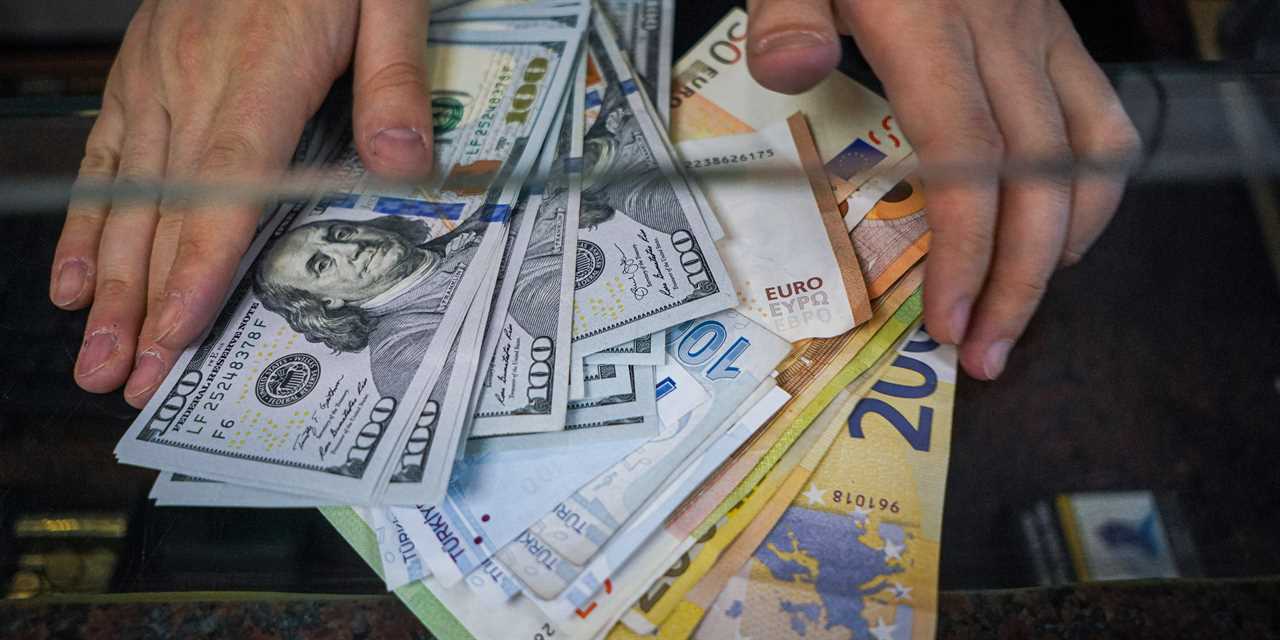
Tunahan Turhan/SOPA Images/LightRocket via Getty Images
- The US Dollar Index dropped to a three-month low on Tuesday, dipping below 106.
- The greenback was under pressure after US wholesale inflation cooled more than expected in October.
- The Fed will likely slow rate hikes in December but a full-on Fed pivot remains elusive.
A key gauge of the US dollar's performance slumped to a three-month low on Tuesday after wholesale inflation data reinforced speculation the Federal Reserve may dial down the size of interest rates increases as prices soften.
The Producer Price Index increased by 8% in October from a year ago, according to the Bureau of Labor Statistics, slower than the 8.3% rate estimated by economists surveyed by Bloomberg. The PPI was down from the 8.4% increase logged in September. Comerica said the latest PPI report was further evidence that businesses were losing pricing power in a cooling economy.
"Softer US inflation expectations are adding further fuel to the fire of dollar weakness, which was widely welcomed across global currencies last week and has now found encouragement to continue into this trading week," Jameel Ahmad, chief investment strategist MENA at Alpari, told Insider in emailed comments.
The US Dollar Index fell by as much as 1.2% to 105.34, the lowest print since August 11. The index, which tracks moves against the euro, the Japanese yen, the British pound, and three other currencies, later trimmed the loss to 0.3%.
Meanwhile, the British pound was up 0.5% against the dollar and the yen gained 0.3%. The euro, however, reversed course and was down 0.1% versus the greenback.
"PPI is often considered a lead indicator of [the Consumer Price Index], so the data suggests that a further cooling in CPI is on the way. The evidence is looking more and more convincing that inflation is falling. This builds on expectations that the Fed will slow the pace of rate hikes," Fiona Cincotta, senior financial markets analyst at City Index, wrote in a note.
Last week, the October CPI report showed that prices rose by less than economists had anticipated at 7.7%.
Investors on Tuesday were further pricing in expectations the Fed will be relatively more dovish at its December policy meeting. The CME FedWatch tool showed an 85.4% probability of a rate increase of 50 basis points next month, higher than the 80.6% probability a day earlier.
"While Fed speakers, such as Lael Brainard, have suggested that the time could be approaching for less aggressive rate hikes, they have also been keen to point out that there is still work to do to bring inflation lower," said Cincotta.
"However, the market sees the light at the end of the rate-hiking tunnel, even if that is in 2023, which is helping boost sentiment and lift demand for stocks. Meanwhile, the USD is tumbling lower as a less hawkish Fed is starting to look likely."
The central bank has kicked up its benchmark interest rate from 0% to a range of 3.75% to 4% this year, including increases of 75 basis points at the past four meetings.
"It is too early to start suggesting that these [inflation] data headlines will lead to a reversal in stance from the Federal Reserve, in which many investors are looking for a pivot away from raising interest rates at the fastest pace in a generation," said Ahmad. "I would instead look at these readings as a reason for the overall pace of US interest rate hikes to slow because inflation expectations are still at a sustained high level."
Read More
By: [email protected] (Carla Mozée)
Title: The US dollar has fallen to a 3-month low after easing inflation in October dampened expectations for more big rate hikes
Sourced From: markets.businessinsider.com/news/currencies/dollar-vs-euro-pound-yen-inflation-ppi-wholesale-ppi-fed-2022-11
Published Date: Tue, 15 Nov 2022 19:41:40 +0000
.png)





